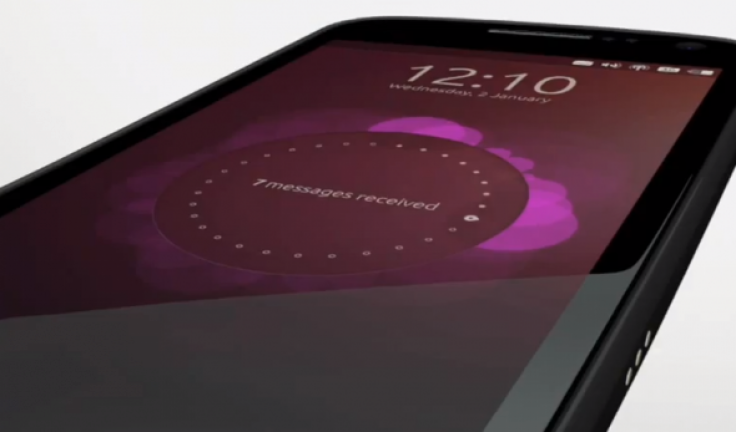Ubuntu Phone OS Demo: Canonical’s Mark Shuttlesworth Shows Off The New Smartphone Interface At CES 2013 [VIDEO]

Just days after London-based Canonical unveiled its brand-new Ubuntu operating system for smartphones, the company took a trip out to Las Vegas to attend the International Consumer Electronics Show (CES) to show off the new open-source mobile interface in person.
Mark Shuttlesworth, the founder of Canonical, offered demonstrations of the new Ubuntu smartphone OS at his company’s booth at CES 2013.
In Shuttlesworth’s demo, given to our friends over at Twil.Tv, the Canonical founder shows off what it’s like to navigate through the Ubuntu OS, browsing through a a number of native applications and system features. One thing’s for sure: This isn’t your average smartphone.
“Generally, you see a lot of content [in the Ubuntu OS],” Shuttlesworth said. “It’s very open, very beautiful. Apps on the left, so it’s just like the Ubuntu launcher on the laptop. On the right, you can go back, and you can go back through a series of apps essentially, just cycle through them. The home screen is down here, and there are scopes [applications], just like you see on your desktop. You can search anything that you’d be searching on the desktop right from your phone.”
Ubuntu’s phone OS is based on Linux, and while it’s open-source like Android, it looks much different than what either Google or Apple currently offers in the way of smartphone interfaces.
During his demo, Shuttlesworth shows off the native photo application, which looks a lot like Pinterest, but with a very clean and open interface. Without buttons, the application uses a carousel of options along the top to let users view all of their photos, or organize their photos by events.
“You can see how beautiful it is when you pull your content together like this,” Shuttlesworth said, showing off the photos app. “The reason it’s so open is because our developer guidelines have no chrome, no buttons, by default. You can bring in the chrome only when you need it.”
While the Ubuntu demo showcased many of the features, Shuttlesworth went one step further, explaining his plan for integrating all of Canonical’s next-gen devices into one cohesive smart ecosystem, all run on Ubuntu.
“Because of the full-code basis, you can dock this [Ubuntu smartphone] and you get the full desktop, so there is a full convergence story,” Shuttlesworth said. “In due course, we’ll have a tablet edition as well, so you could imagine taking this phone, docking it into a big piece of glass, now you’ve got a tablet. Give it a keyboard, now you’ve got a desktop. Point a remote control at it, you’ve got a TV. Media center. All of that running off one device.”
Canonical had introduced its intentions to enter the mobile arena of smartphones and tablets at the 2011 Ubuntu Developer Summit in Orlando, Fla.
“This is a natural expansion of our idea as Ubuntu as Linux for human beings,” Shuttlesworth said at the event. “As people have moved from desktop to new form factors for computing, it's important for us to reach out to our community on these platforms. So, we'll embrace the challenge of how to use Ubuntu on smartphones, tablets and smart-screens.”
Check out the video of Canonical founder Mark Shuttlesworth’s Ubuntu demonstration below.
© Copyright IBTimes 2024. All rights reserved.












